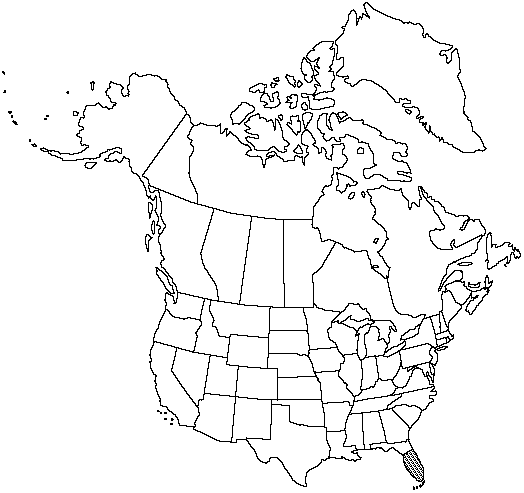Difference between revisions of "Pteris tripartita"
J. Bot. (Schrader) 1800(2): 67. 1801.
FNA>Volume Importer |
imported>Volume Importer |
||
| (7 intermediate revisions by 2 users not shown) | |||
| Line 8: | Line 8: | ||
}} | }} | ||
|common_names=Giant brake | |common_names=Giant brake | ||
| + | |special_status={{Treatment/ID/Special_status | ||
| + | |code=I | ||
| + | |label=Introduced | ||
| + | }} | ||
|basionyms= | |basionyms= | ||
|synonyms={{Treatment/ID/Synonym | |synonyms={{Treatment/ID/Synonym | ||
|name=Litobrochia tripartita | |name=Litobrochia tripartita | ||
|authority=(Swartz) C. Presl | |authority=(Swartz) C. Presl | ||
| + | |rank=species | ||
}} | }} | ||
|hierarchy=Pteridaceae;Pteris;Pteris tripartita | |hierarchy=Pteridaceae;Pteris;Pteris tripartita | ||
| Line 20: | Line 25: | ||
}}<!-- | }}<!-- | ||
| − | --><span class="statement" id="st- | + | --><span class="statement" id="st-undefined" data-properties=""><b>Stems </b>stout, short-creeping, densely and conspicuously scaly; scales pale brown. <b>Leaves</b> clustered, 1–2 m. <b>Petiole</b> straw-colored to brownish red, to more than 1 m, scaly proximally, otherwise glabrous at maturity. <b>Blade</b> deltate to pentagonal, pedate, ultimate divisions pinnately divided, 1–2 × 1–2 m; rachis not winged. <b>Pinnae</b> few, closely spaced, remaining green through winter, not decurrent on rachis, not articulate to rachis, oblong-lanceolate, 1–3-forked, to 7 × 6 dm; base asymmetrical, acute; apex acute; rachis and costae glabrate or with minute hairs, especially near axils of proximal pinnae; penultimate pinnules linear to linear-lanceolate, pinnatifid, separated, not remaining green through winter, not articulate to rachis. <b>Ultimate</b> segments of blade numerous, linear-oblong to linear-lanceolate, to 19 × 6 mm, margins entire or serrulate, apex obtuse and rounded to acute; terminal segments 3–4 cm longer and more tapering than lateral segments. <b>Veins</b> anastomosing near costae and costules, becoming forked and free near margins of ultimate segments. <b>Sori</b> narrow, blade tissue exposed abaxially.</span><!-- |
-->{{Treatment/Body | -->{{Treatment/Body | ||
| Line 26: | Line 31: | ||
|elevation=0–50 m | |elevation=0–50 m | ||
|distribution=naturalized in scattered locations;Fla.;West Indies;Central America;South America;native to tropical Asia. | |distribution=naturalized in scattered locations;Fla.;West Indies;Central America;South America;native to tropical Asia. | ||
| + | |introduced=true | ||
|tables= | |tables= | ||
|references= | |references= | ||
| Line 34: | Line 40: | ||
-->{{#Taxon: | -->{{#Taxon: | ||
name=Pteris tripartita | name=Pteris tripartita | ||
| − | |||
|authority=Swartz | |authority=Swartz | ||
|rank=species | |rank=species | ||
| Line 44: | Line 49: | ||
|elevation=0–50 m | |elevation=0–50 m | ||
|distribution=naturalized in scattered locations;Fla.;West Indies;Central America;South America;native to tropical Asia. | |distribution=naturalized in scattered locations;Fla.;West Indies;Central America;South America;native to tropical Asia. | ||
| + | |introduced=true | ||
|reference=None | |reference=None | ||
|publication title=J. Bot. (Schrader) | |publication title=J. Bot. (Schrader) | ||
|publication year=1801 | |publication year=1801 | ||
| − | |special status= | + | |special status=Introduced |
| − | |source xml=https:// | + | |source xml=https://bitbucket.org/aafc-mbb/fna-data-curation/src/2e0870ddd59836b60bcf96646a41e87ea5a5943a/coarse_grained_fna_xml/V2/V2_666.xml |
|genus=Pteris | |genus=Pteris | ||
|species=Pteris tripartita | |species=Pteris tripartita | ||
| − | |||
| − | |||
| − | |||
| − | |||
| − | |||
| − | |||
| − | |||
| − | |||
| − | |||
| − | |||
| − | |||
| − | |||
| − | |||
| − | |||
| − | |||
| − | |||
| − | |||
| − | |||
| − | |||
| − | |||
| − | |||
| − | |||
| − | |||
| − | |||
| − | |||
| − | |||
| − | |||
| − | |||
| − | |||
| − | |||
| − | |||
| − | |||
| − | |||
| − | |||
| − | |||
| − | |||
| − | |||
| − | |||
| − | |||
| − | |||
| − | |||
| − | |||
| − | |||
| − | |||
| − | |||
}}<!-- | }}<!-- | ||
-->[[Category:Treatment]][[Category:Pteris]] | -->[[Category:Treatment]][[Category:Pteris]] | ||
Latest revision as of 20:24, 5 November 2020
Stems stout, short-creeping, densely and conspicuously scaly; scales pale brown. Leaves clustered, 1–2 m. Petiole straw-colored to brownish red, to more than 1 m, scaly proximally, otherwise glabrous at maturity. Blade deltate to pentagonal, pedate, ultimate divisions pinnately divided, 1–2 × 1–2 m; rachis not winged. Pinnae few, closely spaced, remaining green through winter, not decurrent on rachis, not articulate to rachis, oblong-lanceolate, 1–3-forked, to 7 × 6 dm; base asymmetrical, acute; apex acute; rachis and costae glabrate or with minute hairs, especially near axils of proximal pinnae; penultimate pinnules linear to linear-lanceolate, pinnatifid, separated, not remaining green through winter, not articulate to rachis. Ultimate segments of blade numerous, linear-oblong to linear-lanceolate, to 19 × 6 mm, margins entire or serrulate, apex obtuse and rounded to acute; terminal segments 3–4 cm longer and more tapering than lateral segments. Veins anastomosing near costae and costules, becoming forked and free near margins of ultimate segments. Sori narrow, blade tissue exposed abaxially.
Habitat: Terrestrial in cypress, pond-apple, and other swamps or forested wet habitats, on constantly moist, circumneutral soils
Elevation: 0–50 m
Distribution

Introduced; naturalized in scattered locations, Fla., West Indies, Central America, South America, native to tropical Asia.
Discussion
Selected References
None.